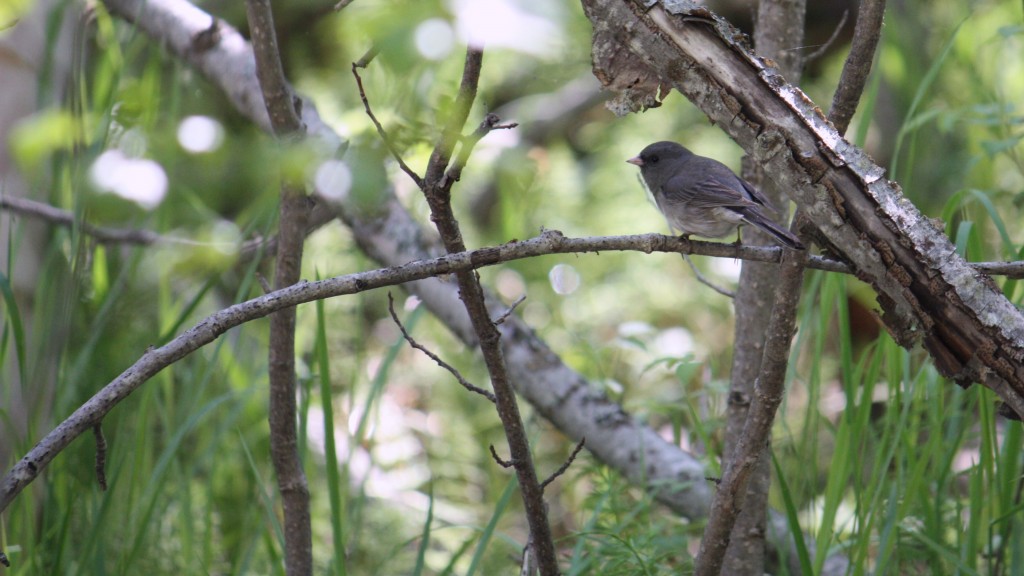Crunch. Crunch. Gravel shifts below each booted footfall. Crunch. Crunch. Warm morning sunlight cuts through the tree line throwing shadows. Crunch. Crunch.
Movement in the brush. Crunch. Stop. Reach for optics, raise to eyes, rack focus for clarity. Scan. Shadows obscure view. Found. Bird in silhouette. Perching-like song bird. It begins to jump from branch to branch. Track. Dark gray head & chest.
Works around tree trunk disappearing from view. Wait. Scan. Patience. Reappears with momentary pause. White belly. Cock of the head, flap of feathers it vanishes into the woods. White outer tail feathers.
Sometimes that is all you get. A few field marks, a couple pieces of a puzzle. Enjoying the world of birds doesn’t have to be expensive. It can be a fun hobby for the entire family without spending a dollar. However, if you would like to invest in birding tools, here are a few that will help putting those puzzles together.
Optics
Binoculars
From song birds to shore birds one commonality will be your desire to get a closer. Binoculars provide quick and easy image magnification.
Three types of Binoculars:
Full-Size
+ Better performance in low-light conditions
+ Wider field of view
+ Steadier image
– BIG
Mid-Size
+ Average overall performance in low-light conditions
+ Balance of size and image quality
Compact
+ Good performance during daytime activities
+ Easy to transport
– Less comfortable during extended periods of use
Size won’t be the only decision you need to make. Binocular image quality is quantified by two numbers. The first is magnification power, the second is the diameter of the front lenses. For example, you are out binocular shopping and come a cross Nikon Action 10×50 Binocular. This model would have a magnification power power of 10, and 50mm lens diameter allowing them to perform better in low-light. Each number has a range, and the higher the number the better the performance.
While it may seem like you would want the highest magnification possible, remember that the higher the power, the harder it is to steady the image as your hand movements will also be amplified. Don’t be afraid to try out a few pairs in-store. They should be comfortable to your eyes and provide desired magnification.
Field Guide
If you were exhausted shopping for binoculars, you may want to tackle field guides another day. Overwhelmed by variety? Prepare yourself! Illustrations or photos? Quick reference or comprehensive? Physical or digital? This list of questions goes on.
I recommend you start with Peterson, Sibley, or iBirds Pro (iOS). Peterson and Sibley are the gold standard field guides. Make sure your guide is specific to your region of North America. This will limit your search and help you get better results. iBirds Pro expands on it’s physical rivals with the addition bird songs on-demand.
Journal
Keeping a journal is a great way to track your expedition into the world of birds. You can list birds by location and date, allowing you to see who are permeant residents or just are migrating through, or maybe you want to start a life list and watch it grow as you add newly identified species. Either way, it can be a fun way and useful to chronicle your adventures.
Flip. Flip. Flip. Each page turn brings you closer to identification. Searching for Perching-like song birds. Skip waterfowl. Skip predatory. Arriving at song birds you narrow the search. Flip. Dark gray head & chest. Flip. White belly. Flip. White outer tail feathers.
Success.
Dark-eyed Junco.
Field Trips
Anchorage Audubon leads free early morning bird walks every Thursday in May. It is an great opportunity to meet up with some long time birders who are more then willing to share their experience and expertise (and spotting scope). Meet at the Campbell Creek Science Center at 6:30am.
Check out their website for more information: anchorageaudubon.org
Zac Clark is a lifelong Alaskan born and raised in Fairbanks. When not attempting to catch Violet-green Sparrows at rest, he works at the University of Alaska Anchorage.
Follow Zac on Instagram at @akmzc.






